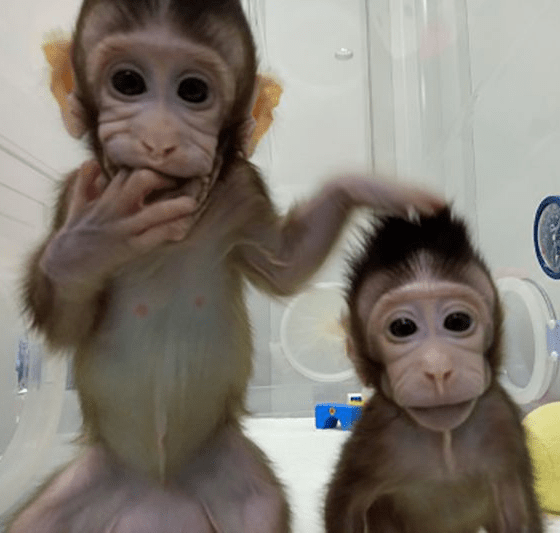Chinese Scientists Clone Monkeys, Breaks Barrier To Human Cloning (Photos)

Chinese scientists have cloned monkeys using the same technique that produced Dolly the sheep two decades ago, breaking a technical barrier that could open the door to copying humans.

Zhong Zhong and Hua Hua, two identical long-tailed macaques, were born eight and six weeks ago, making them the first primates to be cloned from a non-embryonic cell.
The two newborns are now being bottle fed and are growing normally. The researchers said they expect more macaque clones to be born over the coming months.

The scientists used the same technique that was used in cloning Dolly the sheep two decades ago. It was achieved through a process called somatic cell nuclear transfer (SCNT), which involves transferring the nucleus of a cell, which includes its DNA, into an egg which has had its nucleus removed.
Researchers at the Chinese Academy of Sciences Institute of Neuroscience in Shanghai said their work should be a boon to medical research by making it possible to study diseases in populations of genetically uniform monkeys.

This breakthrough also brings the feasibility of cloning humans.
“Humans are primates. So (for) the cloning of primate species, including humans, the technical barrier is now broken,” Muming Poo, who helped supervise the program at the institute, told reporters in a conference call.
“The reason … we broke this barrier is to produce animal models that are useful for medicine, for human health. There is no intention to apply this method to humans.”
Back in 1999, scientists cloned a rhesus monkey named Tetra using a method called embryo-splitting, which is easier to execute than SCNT but cannot generate as many offspring. Until the most recent experiment, however, all attempts to clone primates with SCNT had failed.




